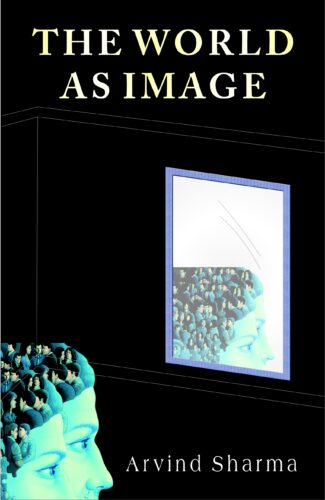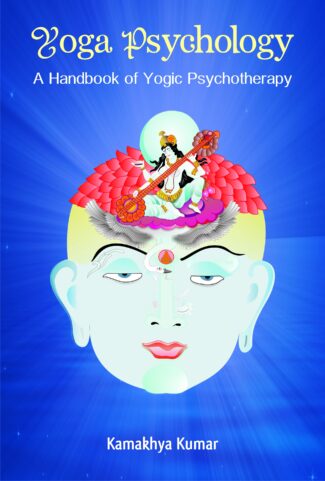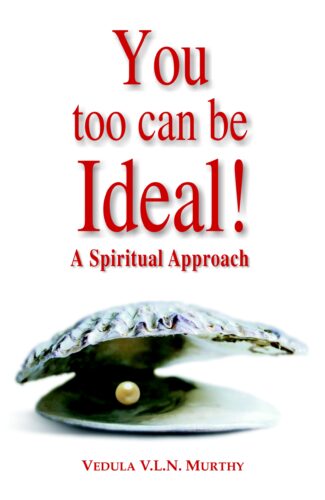Showing 321–328 of 328 results

Book exploring one of Advaita Vedantas central illustrative themes with which it tries to render its doctrines credible in the face of our experience of plurality and variety in life.
There is something profoundly counter-intuitive about Advaita Vedanta. Nothing is more obvious to both the philosophical as well as the non-philosophical observer than the fact that multiplicity constitutes the basic datum of our experience. Variety is not only the spice of life it is a cardinal fact of life. The doctrines of Advaita Vedanta shock us by flying in the face of this fact and by denying any ultimacy to that plurality and variety which we experience so intimately. This naturally raises the question: how does Adavita Vedanta render its doctrines credible in the face their apparent implausibility. This book is an exploration of one of its central illustrative devices with which it tries to accomplish this daunting task.

The image of Yama, the god of death in Hindu mythology, has come to have many variants. Dr. Merhs study tries to capture these against their essential literary settings to explore all possible traits of Yamas personality.
In the Hindu pantheon, Yama holds a unique place. A counterpart, in the indigenous tradition, of Avestan Yima, Egyptian Osiris or Greek Pluto, he inspires terror in the heart of an average mortal : not only owing to his overlordship of the abode of the dead, but also for his identification with death itself. Yamas image in Hindu mythology, however, has come to have full many variants which Dr. Merhs study tries to capture against their essential literary settings. Based on the prodigious mass of Indias old-world scriptural literature the Vedas, Samhitas, Brahmanas, Aranyakas and Upanishads, besides the puranic texts, the book meticulously explores all possible traits of Yamas personality, highlighting how the mythical view of this glorious, other-world god passes through a striking change over the millennia between the Rigveda and the later Puranas. Unfolding the deitys Vedic and Puranic descriptions respectively in part 1 and part 2 of the book, the author focusses specially on Yama, the creator, preacher, the philosopher, the law-giver, the punisher and above all, on his role as an eschatologist. Invaluable to the scholars of Indology, Hindu mythology and comparative religion.

The book, highlights the essential import of the innocuous-looking, yet enigmatic, diagrams called Yantras surfacing from the occult practices of the tantrics. It examines a range of tantric yantras, with their varieties, applications, modes of construction and above all their iconographic features.
Hinduism is known for the bewildering profusion of its deities, who are represented not only in two or three dimensional anthropomorphic images, but also in abstract configurations, known as yantras. In yantras is, thus, seen almost a parallel with the surfeit of deities in Hindu tradition. Literally meaning an instrument, apparatus or a talisman, yantra is a kind of mystical diagram used, in tantra, for both meditation and invoking a divinity, and is believed to possess/arouse occult powers. Drawn only by the adept: the ones schooled in this arcane, highly intricate process, and energized by siddh mantras, these seemingly innocuous geometrical figures are employed for any number of reasons or desires: whether to attain wealth, ward off disease, beget a son, vanquish enemies, or even to cause somebodys death. This book, the latest from Professor Bunce, highlights the essential import of these innocuous-looking, yet enigmatic, diagrams surfacing from the occult Practices of the tantrics. The author, an internationally known scholar of Oriental Art, examines a range of tantric yantras, with their varieties, applications, modes of construction and, above all, their iconographic features. Also inter- woven in his text are lucid descriptions of all else associated with a yantra, notably, its deity, its specific purpose, its predominant and secondary numbers and its mantra. Carrying beautiful visual representations of over a hundred yantras, Professor Bunces study holds out enduring appeal to the readers concerned not only with the iconography of tantric yantras, but their mystifying under-pinnings as well.

Dr. N. C. Panda examines yoga-nidra as a scientific discipline the theory, its psychological basis, its techniques and applications to reveal its significance as a means of strengthening the bodys immune system and preventing and curing diseases and regulating ones life patterns. It involves comparative analyses like that of yogic trance and hypnotic trance and yoga-vedanta and Freudian psychologies.
Healing of body and mind through yoga is gaining immense significance at present as a world-wide science of therapy. In this context, yoga-nidra, a self-therapy technique of yoga and tantra, is important as an effective means of regulating the mind. In this volume, Dr. Panda, a noted philosopher and psychologist, yogi and tantrist, delves into the principles and practices of yoga-nidra based on materials from the tantras and Patanjali Yoga in an attempt to explain its benefits with special reference to modern medicine. The book presents yoga-nidra as a scientific discipline that is a potent means to strengthen the bodys immune system and thus to prevent and cure diseases and to regulate ones life patterns. It examines in detail the theory of yoga-nidra, going into the Indian concept of mind and personality. It establishes the psychological basis of yoga-nidra by comparing hypnotic trance and yogic trance and Freudian and Yoga-Vedanta psychologies. It then lucidly presents the techniques of yoga-nidra and deals with the applications of yoga-nidra with relation to curing of psychosomatic and other diseases of common occurrence and to solving current problems such as drug-addiction and stress-induced maladies. This well-conceived and thorough research work will prove useful to scholars of ancient Indian medical science and psychology, particularly those concerned with study of yoga vis-a-vis modern medical problems and systems. It will be of equal importance for the general readers owing to its interesting subject matter, simple style of presentation and easy adoption by the non-adepts.

The sound practice of yoga enables one to have a disease-free body and keen intellect. This book details the impact of various yoga practices on psychology and specifies that consciousness has a wider conation in yoga in developing one’s personality traits and leveraging them further to keep him/her happy and experience a blissful life.
Yoga psychology is both a positive and a normative science. It not only analyses human personality and its growth, but sets normative ideals and prescribes techniques to achieve such objectives, as well. Thus, expansion of consciousness and making oneself the master of his/her mind are the broad objectives of yoga psychology. The topological aspect of mind as described by Freud in terms of conscious, subconscious and unconscious levels was well detailed in the yogic literature, thousands of years ago. The sound practice of yoga enables one to have a disease-free body and keen intellect.
The book, thus, details the impact of various yoga practices on psychology and specifies that consciousness has a wider conation in yoga. Yoga presents vivid and sound meditation procedures for the attainment of psychic consciousness through the awakening of kundalini. Homeostasis or balance is the central principle in yoga psychology, and it holds that any sort of imbalance in the system physical, psychological or pranic creates disorders and the solution lies in rebalancing it. Here comes the role of yogic psychotherapies such as prarthana, mantra sadhana, spiritual couselling, pranayama, yajna, sankirtana, svadhyaya and vrata anushthana.
This volume enunciates that yoga psychology is an applied science, and thus has remedies for many individual and social problems. It deals at large with the application and benefits of yogic practices in developing ones personality traits and leveraging them further to keep him/her happy and experience a blissful life.

Dr. T. N. Mishra explores the moral and philosophical meanings and significance of yoga and studies the philosophies and practices that bear reference to it. Abounding in illustration, notes and references to scholarly treatises, it explains yoga psychology, its classification, techniques and stages and practice and concentrating on Yoga-tantra and its impact on Indian art and architecture.
The word yoga and the various concepts associated with it are being interpreted and understood with great interest the world over especially in recent years. This work by a noted research scholar, Dr. T. N. Mishra explores the meanings of the word yoga and its moral and philosophical annotations, and conducts an intensive study of the philosophies and practices that bear reference to it. A thorough research, Yoga-Tantra and Sensuousness in Art goes into the theoretical foundations of Yoga, tracing its roots to the sacred scriptures and explaining the goal of Yoga, the discipline it involves, Yoga psychology, its techniques and stages, and classification and practice of Yoga as Mantra-Yoga, Laya-Yoga, Hatha-Yoga and Raja-Yoga. It comprehensively examines the aim and philosophy of Yoga-Tantra and the way to awaken the kundalini through the cakras practising Yoga-Tantra. It makes a detailed analysis of the Yoga-sadhana of the Natha siddhas (the ulta-sadhana) and Yoga-sadhana as found in Vaisnava and Buddhist Sahajiya. Citing interesting examples, it importantly deals with Yoga and Tantra as reflected in Indian art: the impact of the philosophy of Yoga-Tantra with its subtle sensuality on Indian secular and religious architecture and sculpture. Abounding in illustrations and extensive in notes and references to ancient scholarly treatises and exponents of Yoga and to modern researches on the subject, the book will interest all scholars of Indian art, philosophy and spirituality and appeal to general readers on Yoga as well.

Dedicated yogic exercises lead one to attain mystical powers, though that is not the core intention of yoga. This book cites several examples in which people have attained superhuman powers through yoga, and attests that these are not mere illusions, but can be assimilated and achieved by dedicated efforts even today.
India is invariably the homeland for Yoga being entrusted to the offsprings of RishisMaharshis of the olden times. Yoga is for the physical, mental, intellectual and spiritual development of a human being. At one end the attainment of salvation through ones spiritual awakening and knowledge of the eternal truth is considered as the essence of yoga, on the other an efficient yogi can attain the special mystical powers through yoga sadhana. All this has been illustrated in the book Patanjaliyogadarshana of Maharshi Patanjali. The attainment of mystical powers should not be the prime object of yogic exercises, but most of the practitioners adhere to them to attain para-natural powers only. Though it is impossible in todays scientific age to easily believe in these mystical powers, this book majestically proves citing various examples, that these superhuman powers are not mere illusions but can be assimilated and achieved easily even in the materialistic world of today. These powers can be accomplished by practising the specifically prescribed path of the yogic philosophy. Such powers, when achieved should not make a person self-indulgent, but these should be used for the public welfare only. This book, undoubtedly, will be beneficial not only for those who specialize in yoga but also for a layman.

This small book, written in a simple and lucid style, contains teachings of great men, gleanings from the scriptures, and examples from the epics and Puranas, and suggests easy solutions to the various problems faced by man in the present-day world of violence, wars, killings and disasters, and how to have a holistic approach to life.
Indian culture, and civilization in particular, is marked by a spiritual thought culture that is a good guidance to the ideal values of spirituality. The book is an effort to reveal the worth of cultivating spiritual values for a healthy, happy and peaceful life particularly in the modern, increasingly complex world of today. It comes as an inspiration to follow the path of simple living and high thinking, in the footsteps of saints and spiritual thinkers. This work deals with the path of dharma or righteousness, the meaning of a divine life, importance of spiritual knowledge, the great potential power in the universe which is not seen but which controls everything, and the nature of the universe. It emphasizes the need to control ones senses to achieve mastery over them, the need to keep the mind under control and the importance of the kind of food we consume to develop our inner qualities. Referring to the views of thinkers and philosophers of India like Shankaracarya, Sri Ramakrishna Paramahansa, Swami Vivekananda and others and to Indian legends and tales, it underlines the importance of cultivating interpersonal relations, the habit of renunciation, good company and meditation as a technique to self-fulfilment and peace.
| There are no products |